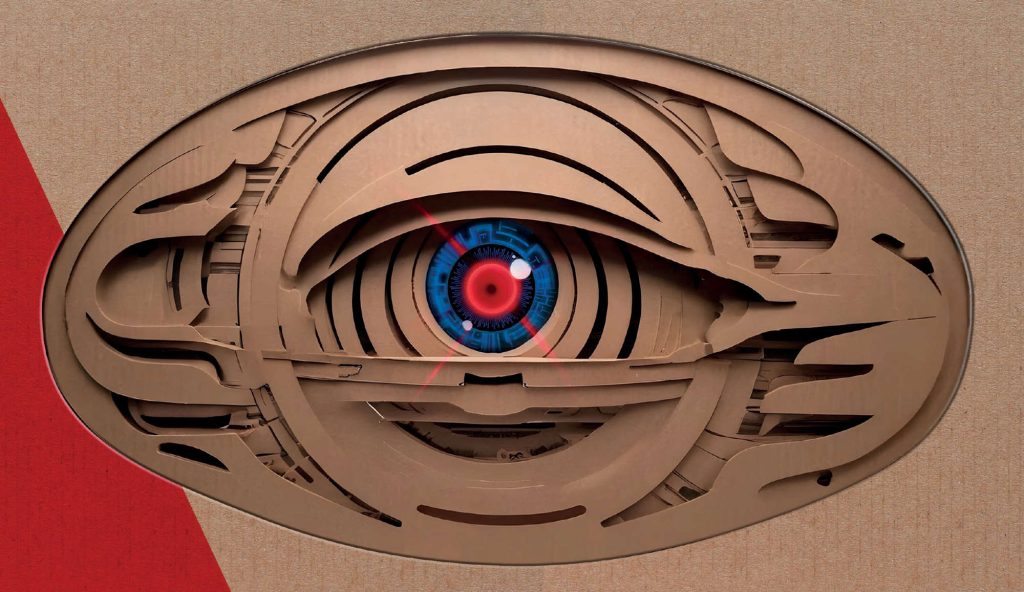SERRA is a recognized global leader in peripheral equipment types and installed bases for single-pass digital printing, perfectly tailored to corrugated lines with fast, secure workflows that increase productivity. The company is also developing a new series of innovative artificial vision applications for the corrugated industry.
Implementation Cost: What is the initial cost of acquiring and implementing the quick die change system and die handler?
The SERRAPID quick mount die system ranges from €50,000 to €80,000, depending on the size of the die cutting cylinder. The Serrarm costs between €28,000 to €50,000, based on rail configuration complexity. Installation for both systems can be completed within a week or four days each if installed separately.
Are there potential cost savings or increased productivity that could offset the initial investment in the long run?
Cost savings are notable with one less person required for die mounting, saving a salary. Additionally, increased productivity results from reduced time in each die change, especially beneficial for machines with frequent die changes.
Operational Downtime Reduction: How much downtime can be expected to be reduced with the implementation of the quick die change system?
Previously, die changes took 15 to 25 minutes. With the new system, changes can be completed in under 5 minutes.
What impact will the die handler have on minimizing operational interruptions during die changes?
The die handler ensures smooth and weightless transportation, enabling one-person operation with ease. The integration with the quick die mount system further streamlines the process.
Training Requirements: What kind of training is required for our existing staff to operate and maintain the quick die change system and die handler?
SERRA provides on-site training during installation, including practical tips for ease of use. Access to online training videos with 3D models is also available for self-paced learning and maintenance guidance.
How quickly can the team adapt to the new technology without compromising productivity?
Your team can start using the system on the day of installation and training, ensuring rapid integration without productivity loss.
Compatibility and Integration: Are the quick die change system and die handler compatible with our existing machinery and production processes?
Yes, both systems are compatible with 99% of rotary die cutters in the field, ensuring seamless integration.
How seamless is the integration process, and what modifications, if any, are needed?
The integration process is smooth, with no modifications required for the machine itself. Minor modifications may be needed for dies, which can be done easily using provided adapters or by die makers.
Maintenance and Reliability: What is the maintenance schedule and cost associated with these systems?
Both systems have minimal maintenance requirements. SERRAPID needs quick air cleaning after each use and weekly visual inspections, while SERRARM requires regular oiling and monthly visual inspections.
How reliable are these systems, and what measures are in place for breakdowns or technical issues?
With over 2000 installed SERRAPIDs and 50 SERRARMs worldwide, the systems boast longevity and reliability. Instant repair kits and online assistance are available for prompt issue resolution, ensuring minimal downtime.
Customization and Adaptability: Can the quick die change system be customized to suit specific manufacturing processes?
Both SERRAPID and SERRARM offer customization options. SERRAPID can match existing bolt patterns for die interchangeability, while SERRARM’s rails can be tailored to fit perfectly into your space and processes.
How adaptable is the die handler to handle various types and sizes of dies?
SERRARM effortlessly handles any die dimension and weight, providing ergonomic comfort and ease of use for workers.

Safety Features: What safety features are integrated into the quick die change system?
Safety features include die locking in case of air loss, two-hand buttons to prevent finger clipping, emergency stop button, and die handles for safer handling.
How does the die handler contribute to improving safety for operational staff?
SERRARM’s smooth and weightless design reduces worker effort and risk of back pain. Integrated controls ensure hands are always safe, while ergonomic design minimizes muscle strain.
Production Speed and Quality Throughput: What improvements can be expected in terms of production speed and quality throughput?
While machine speed remains consistent, SERRAPID’s equal distribution of cutting strength improves cut quality. Anvil cover and die life are extended, enhancing overall production quality.
ROI and Cost-Benefit Analysis: What is the expected return on investment (ROI) over a specified period after implementing the quick die change system and die handler?
Let’s crunch the numbers. With a standard 66” x 2800 die cutting cylinder, the SERRAPID quick mount die system demonstrates a compelling ROI. Assuming 2 shifts and up to 6-8 die changes per day, the ROI can typically be realized within approximately 6 months.
Can a comprehensive cost-benefit analysis be provided to assess the overall financial impact on our operations?
Absolutely. SERRA can provide a detailed cost-benefit analysis tailored to your specific operations. This analysis will factor in variables such as reduced labor costs, increased productivity, minimized downtime, and extended equipment lifespan to provide a comprehensive overview of the financial impact of implementing these systems.
Customer Support and Service: What level of customer support and service can we expect?
Installation training, physical refurbishment, and online assistance are available, along with instant repair kits for quick issue resolution.
Is there ongoing support for troubleshooting, updates, and training?
Yes, ongoing support includes troubleshooting, updates, and additional training as needed, ensuring smooth operation and continuous improvement.

